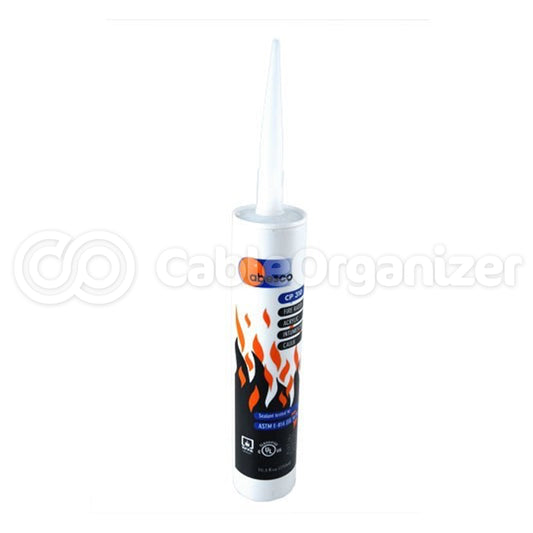Creating a Fire Protection Plan for Your Business
By: CableOrganizer®
 It's estimated that up to 80,000 serious workplace fires occur every year in the United States, taking the lives of approximately 200 workers, and injuring another 5,000. If you own or manage a business, it's your responsibility to put fire safety measures in place; and protect your employees, your company, and yourself, from the devastation that can result from a workplace blaze. To help you form an effective fire plan — and round out the preventive steps you've already taken — we've put together a list of tips that covers everything from electrical wiring, to emergency escape routes.
It's estimated that up to 80,000 serious workplace fires occur every year in the United States, taking the lives of approximately 200 workers, and injuring another 5,000. If you own or manage a business, it's your responsibility to put fire safety measures in place; and protect your employees, your company, and yourself, from the devastation that can result from a workplace blaze. To help you form an effective fire plan — and round out the preventive steps you've already taken — we've put together a list of tips that covers everything from electrical wiring, to emergency escape routes.
- Before you do anything, schedule a meeting with a local fire official to find out exactly which types of fire alarms and sprinkler systems city or county codes require you to put in place. Your location, industry, and facility size can greatly affect your choice of fire protection equipment, so find out exactly what you need before you invest.
- Create a detailed fire evacuation plan for your employees, keeping in mind the special needs of individuals who have disabilities or don't speak English. Make sure that those with physical difficulties are provided with the necessary assistance and an easy path out of the building; and that non-English speakers can understand that evacuation is necessary, in the event your fire alarm system uses verbal announcements.
- Employee awareness is key! Once you have your emergency plan in place, train all employees in the procedure. Conduct several fire drills every year to ensure there won't be any confusion in the event of a real fire emergency. Designate a safe spot outside of the facility where employees can regroup, recover, and conduct a head count. Be sure this location is far enough away from the building, so no one is put in danger by heat, falling debris, or shattering glass.
- Have a strict policy against employee or company vehicles parking or idling in fire lanes; these need to always be kept clear for fire trucks, ambulances, and police cars.
- Post emergency contact information and procedures near every workstation, as well as in break areas.
- Identify which machines or electronics are potential ignition sources; and make sure that those devices are never left running unattended.
- Extension cords are temporary solutions, not a substitution for permanent wiring. Only use an extension cord when you absolutely must, then disconnect it as soon as the job is done. Never use extension cords that are longer than 6 feet; and be very careful not to overload them — overloading causes wiring to overheat, a problem that can quickly escalate into an electrical fire.
- Do not use cube taps or any other devices that let you plug more than one appliance into a single electrical receptacle.
- Regularly check that all receptacles and junction boxes are free from exposed wiring.
- Make sure there is at least 3 feet of clearance in front of electrical panels so that in the event of an electrical fire, personnel have easy access to breakers should they need to cut power to one or more circuits.
- Check all through-penetrations (the points where pipes, cables, or conduit come through walls, floors, or ceilings) for appropriate firestopping sealants. No matter where your business is located, fire code requires that these types of structural penetrations be sealed with intumescent caulk, foam or mortar to prevent flame and smoke from moving through the cutouts and into other rooms.
- Keep combustible chemicals and materials a minimum of 3 feet away from heat sources.
- Make sure that sprinkler heads are free from obstruction, so that water flow is not interrupted in the event of a fire. Clearance requirements generally range between 18 and 24 inches but check with your local authorities for the specific requirements in your area.
- Fire doors are there for a reason: to prevent the spread of flame and smoke. If left even partially open, fire doors lose their effectiveness, so always keep them closed. Regularly inspect the fire doors in your facility to ensure they're functioning properly and free from obstruction. Be sure they're never propped open with doorstops, wedges, or other objects.
- Check the dates on fire extinguishers to make sure that they've been inspected and serviced within the past year. It's also a good idea to check the pressure gauge monthly. If the needle is resting somewhere within the green area, the extinguisher is functional.
- Consult your local fire code to make sure your facility has an adequate supply of fire extinguishers.
- Train all employees on how to safely and properly use a fire extinguisher.
- Secure all propane tanks and other flammable gas cylinders so they won't tip over and develop leaks.
- Prevent flammable clutter like paper, wood, and cardboard boxes from piling up in hallways and storage spaces. These materials not only easily ignite but can also block escape routes.


